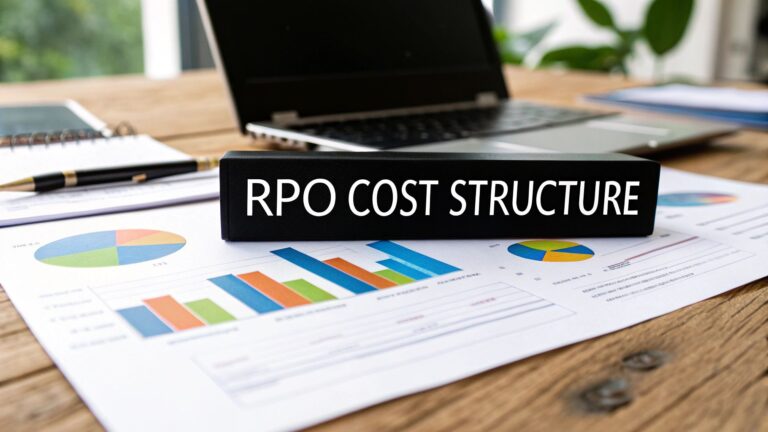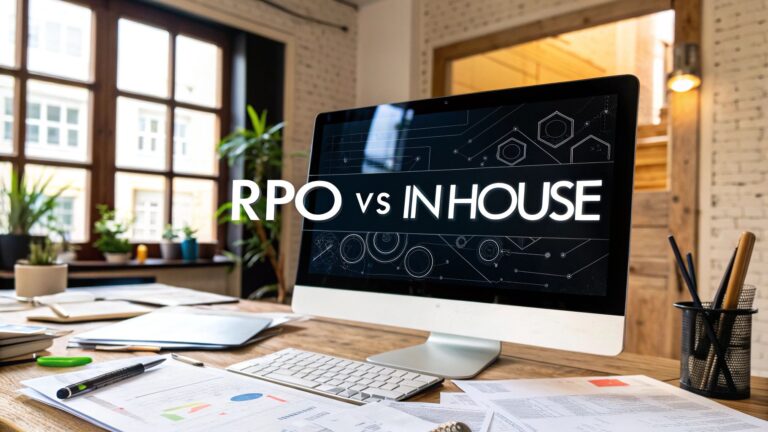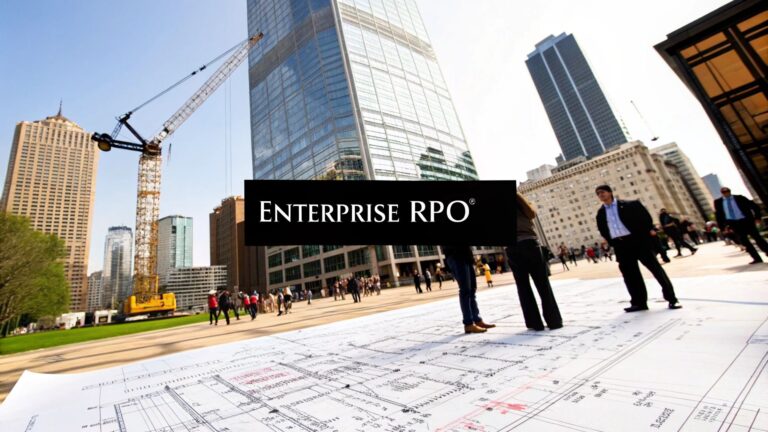In 2025’s dynamic business landscape, staying updated with the Top HR Trends in India 2025 is crucial for HR professionals. HR Executive roles and responsibilities have evolved far beyond basic hiring functions. HR Executives ensure smooth functioning of organizational operations.
From onboarding new talent to implementing company policies, HR executives’ roles and responsibilities impact on employee satisfaction and company growth is undeniable.
Whether you’re a job seeker exploring HR careers or a company hiring an HR professional, this guide covers everything you need to know about what exactly does an HR executive do.
Who is an HR Executive?
An HR Executive is like the bridge between employees and management. They handle hiring, employee concerns, company policies, and much more.
Unlike HR Managers (who focus on strategy), HR Executives deal with day-to-day operations, making sure the workplace runs smoothly.
HR Executive Job Description
Human Resources (HR) Executives are the backbone of any organization’s people management function. They are responsible for supporting various HR initiatives, ensuring smooth daily HR operations, and acting as a bridge between management and employees.
From recruitment to employee engagement and compliance, HR Executives play a crucial role in maintaining a positive and productive work environment.
Let’s break down the key responsibilities in HR Executive Job Description:
HR Executive
Department: Human Resources
Reporting To: HR Manager
Job Summary:
As an HR Executive at [Your Company Name], you will be responsible for overseeing the complete employee lifecycle—from recruitment to offboarding. The ideal candidate will have hands-on experience in core HR functions and a solid understanding of applicable labor laws and HR regulations.
1. Recruitment and Staffing Support
- Assist in sourcing candidates through job portals, social media, and internal databases.
- Schedule and coordinate interviews between candidates and hiring managers.
- Help draft and post job descriptions and advertisements.
- Conduct initial screening and shortlist qualified candidates.
2. Onboarding and Induction
- Manage onboarding processes including document collection and background verification.
- Coordinate orientation sessions for new hires.
- Ensure a smooth transition into the company by helping new employees understand company policies and culture.
3. HR Operations and Documentation
- Maintain accurate employee records and HR databases (attendance, leave, performance).
- Draft letters such as offer letters, confirmation letters, and employment contracts.
- Manage HR documents and ensure timely updates in HRIS (Human Resource Information System).
4. Payroll and Attendance Management
- Collect and verify attendance records from various departments.
- Coordinate with the payroll team to ensure accurate salary processing.
- Assist in managing leave records and employee reimbursements.
5. Employee Engagement and Communication
- Organize employee engagement activities and wellness programs.
- Support HR-led initiatives like town halls, feedback sessions, or training workshops.
- Act as a point of contact for employee queries related to policies, benefits, or grievances.
6. Policy Compliance and Legal Support
- Ensure company HR policies comply with labor laws and employment regulations.
- Support audits and statutory compliance requirements.
- Keep records up to date for inspections and internal reviews.
7. Performance Management Assistance
- Coordinate performance review cycles and appraisal meetings.
- Help managers and employees understand the performance management system.
- Maintain appraisal documentation and feedback records.
Required Qualifications and Skills
Educational Background:
- Bachelor’s degree in Human Resource Management, Business Administration, or a related field.
- An MBA in HR or related certifications (e.g., SHRM, PHR) is an added advantage.
Key Skills:
- Strong interpersonal and communication skills.
- Familiarity with HR software and tools (HRIS, payroll systems).
- Good organizational and time management abilities.
- Basic knowledge of labor laws and HR best practices.
Key Roles and Responsibilities of HR Executives
HR Executives wear many hats- they’re recruiters, problem-solvers, policy experts, and employee cheerleaders all rolled into one. From hiring top talent to ensuring smooth payrolls and keeping the workplace happy, their job is never boring.
Here’s a simple breakdown of how a Job Description (JD) of HR Executive roles and responsibilities looks like-
1. Human Resource Planning
HR Executive roles and responsibilities begin with strategic workforce planning to align talent with organizational goals. They forecast hiring needs, allocate resources efficiently, and regularly assess team performance against company expectations to make necessary adjustments.
- Develop recruitment strategies to meet business objectives
- Analyze workforce requirements for upcoming projects
- Monitor team leader performance and implement improvements
2. Job Analysis & Talent Optimization
HR Executives conduct detailed job analyses to ensure optimal hiring and internal mobility. They study role requirements, facilitate internal transfers to retain top talent, and reorganize teams for maximum efficiency.
- Create accurate job descriptions for all positions
- Implement internal job transfers to reduce hiring costs
- Reallocate responsibilities to enhance team performance
3. Maintaining Positive Work Culture
A core part of HR Executive roles and responsibilities is fostering a transparent, secure, and engaging workplace by identifying top employee engagement strategies. They organize events and open forums to boost morale and encourage employees to voice concerns freely.
- Develop trust through open communication channels
- Plan team-building activities (sports, cultural events)
- Address workplace issues promptly and fairly
4. Recruitment & Onboarding
HR Executives manage end-to-end hiring processes, from crafting job ads to designing structured onboarding programs that help new hires integrate seamlessly.
- Post openings on job portals/social media
- Screen resumes and conduct initial interviews
- Create offer letters and orientation plans
Implementing effective strategies is essential to attract and retain top talent in today’s competitive market
5. Payroll Processing
The roles and responsibilities of an HR Executive also involves accurate, timely salary disbursements while managing bonuses, deductions, and compliance with tax regulations.
- Calculate salaries based on attendance/leaves
- Process incentives and performance bonuses
- Maintain payroll records for audits
6. Policy Development & Implementation
HR Executives draft and update company policies to balance organizational needs with employee welfare while ensuring legal compliance.
- Revise policies annually (or as needed)
- Communicate policy changes effectively
- Align rules with labor laws and industry standards
7. Employee Records Management
HR Executives maintain comprehensive records to track demographics, skills gaps, and compliance requirements, enabling data-driven decisions.
- Secure personal/educational details of staff
- Identify training needs through record analysis
- Ensure adherence to data protection laws
8. Performance Appraisals
HR designs fair evaluation systems to assess employee contributions and guide promotions/role changes.
- Set measurable KPIs for objective reviews
- Document appraisal outcomes systematically
- Mediate feedback sessions between staff and managers
9. Compensation & Benefits Management
They develop competitive pay structures with salaries, insurance, bonuses and compensative programs to motivate employees while ensuring high performance.
- Benchmark industry-standard packages
- Align rewards with individual/company performance
- Administer health benefits and retirement plans
10. Employee Relations Management
HR Executives build trust across all levels by resolving conflicts and encouraging social connections for a cohesive workplace.
- Act as neutral mediators in disputes
- Organize informal gatherings (team lunches)
- Promote open-door policy for concerns
Detailed Responsibilities of an HR Executive
Daily Tasks:
- Answering employee queries regarding policies and procedures.
- Managing attendance systems and maintaining HR records.
- Updating employee databases and preparing documentation for new hires.
Monthly/Quarterly Tasks:
- Supporting payroll processing and coordinating with finance.
- Organizing and tracking performance reviews.
- Preparing HR reports for management review.
Strategic Tasks:
- Participating in workforce planning and recruitment forecasting.
- Supporting employer branding through campus drives and social media.
- Assisting in HR audits and internal assessments.
Essential Skills for Implementing HR Executive Roles and Responsibilities
The PwC India Workforce Hopes and Fears Survey 2023 highlights the growing emphasis on skills over job history.
To succeed in any HR Executive role, professionals need a mix of soft skills and technical expertise- change management in HR. These skills help them effectively manage people, ensure compliance, and contribute to business goals.
Whether it’s resolving a conflict, implementing policies, or running performance reviews, the right skills can make a significant difference.
- Communication & Interpersonal Skills:HR executives must be able to clearly communicate policies and build positive relationships with employees.
- Problem-Solving & Conflict Resolution:Handling grievances tactfully and mediating workplace conflicts is another important skill one must possess to become an HR Executive.
- HR Software Knowledge:HR Executives should be familiar with HRMS (Human Resource Management Systems), ATS (Applicant Tracking Systems), and payroll tools.
- Understanding of Labor Laws:Another crucial skill among HR Executives is to be able to develop an awareness of local and national labour regulations to ensure company compliance.
Career Growth & Salary Expectations
Starting your journey as an HR Executive opens the door to a rewarding career in human resources. With experience, learning, and skill development, you can move up to roles such as Senior HR Executive, HR Manager, or even HR Business Partner, where you’ll handle more strategic responsibilities and lead teams.
For someone willing to start a career in Human Resources, HR Executives can expect competitive compensation packages according to the Michael Page India Salary Guide 2025.
The average salary of an entry-level HR Executive in India typically ranges from INR 2.5 to 4 lakhs per annum (LPA). As you gain 3 to 5 years of experience, develop your skills, and take on more complex tasks, your salary can increase to around INR 5 to 8 LPA.
However, salary figures can vary based on several factors:
- Location – HR professionals in metro cities like Bangalore, Mumbai, and Delhi usually earn more than those in smaller cities.
- Industry – Sectors like IT, finance, and consulting often offer higher pay compared to manufacturing or retail.
- Company Size – Larger companies with structured HR departments may offer better packages and growth opportunities.
If you’re passionate about working with people, solving problems, and helping a company grow from the inside out, a career in HR offers a strong, long-term path.
Challenges Faced by HR Executives
Being an HR executive isn’t all smooth sailing. While they play a crucial role in shaping company culture and employee satisfaction, they also face some tough hurdles.
The Mercer’s Global Trends Report 2024-25 identifies key focus areas for HR leaders, including upskilling and workforce planning.”
From managing workplace conflicts to adapting to ever-changing work models, HR executive roles and responsibilities come with their fair share of challenges.
Here’s a look at some of the biggest obstacles they tackle daily:
- Managing Workplace Conflicts:Balancing employee interests and organizational policies can be challenging.
- Adapting to Remote/Hybrid Work:Updating policies and engagement practices to suit flexible work environments.
- Staying Updated:Continuous learning is essential to stay relevant with evolving HR trends and legal changes.
Differences Between HR Executive, HR Manager, and HR Generalist
Many professionals confuse these HR roles due to overlapping responsibilities. While all three positions work toward organizational success, their focus areas, seniority levels, and day-to-day tasks differ significantly. Below is a clear comparison:
| Aspect | HR Executive | HR Manager | HR Generalist |
| Primary Focus | Operational tasks (recruitment, payroll, employee relations) | Strategic leadership (policy-making, compliance, team management) | Broad HR functions (mix of operational and strategic tasks) |
| Seniority Level | Entry to mid-level | Mid to senior-level | Mid-level (varies by company size) |
| Decision-Making | Implements policies set by HR Manager | Creates and approves policies | May contribute to policy design in smaller organizations |
| Scope of Work | Specialized in daily HR operations | Oversees entire HR department | Handles multiple HR areas (e.g., hiring + payroll + compliance) |
| Strategic Role | Limited | High (aligns HR with business goals) | Moderate (depends on organizational structure) |
| Typical Tasks | – Posting job ads– Processing payroll– Onboarding new hires | – Designing HR policies– Managing HR budgets– Leading HR teams | – Recruitment + employee relations– Training coordination– Basic compliance tasks |
Why the Confusion?
- Smaller companies often blend these roles, assigning HR Generalists tasks typically handled by Executives and Managers.
- Job titles vary across industries (e.g., an “HR Executive” in one firm may perform “HR Generalist” duties elsewhere).
- All roles collaborate closely, creating perception overlaps.
Wrapping Up
Understanding HR Executive roles and responsibilities is crucial for both professionals entering the field and businesses looking to strengthen their HR team.
HR Executives play a central role in shaping company culture, enhancing employee experiences, and aligning HR functions with business goals.
FAQs
1. What are the main responsibilities of an HR Executive?
HR Executives handle day-to-day HR operations including recruitment, onboarding, payroll processing, employee engagement, policy implementation, and performance appraisals. They act as a bridge between employees and management to ensure a smooth and compliant workplace.
2. What is the average salary of an HR Executive in India?
Entry-level HR Executives in India typically earn between ₹2.5 to ₹4 LPA. With 3–5 years of experience, salaries can rise to ₹5–8 LPA. Pay varies based on location, industry, and company size.
3. How do HR Executives differ from HR Managers?
HR Executives focus on operational tasks like hiring and payroll, while HR Managers handle strategic functions such as policy-making, compliance, and team leadership. Managers also have greater decision-making authority.
4. What qualifications are required to become an HR Executive?
A bachelor’s degree in Human Resources, Business Administration, or a related field is typically required. Some roles may prefer candidates with HR certifications or a postgraduate degree in HR management.
5. What skills are needed to become an HR Executive?
Key skills include communication, problem-solving, conflict resolution, knowledge of labor laws, and proficiency in HR software like HRMS or ATS. A good HR Executive also needs strong organizational and interpersonal abilities.
Ready to build a high-performing HR team?
Partner with Taggd to access pre-screened, role-ready HR professionals who align with your organizational goals.









